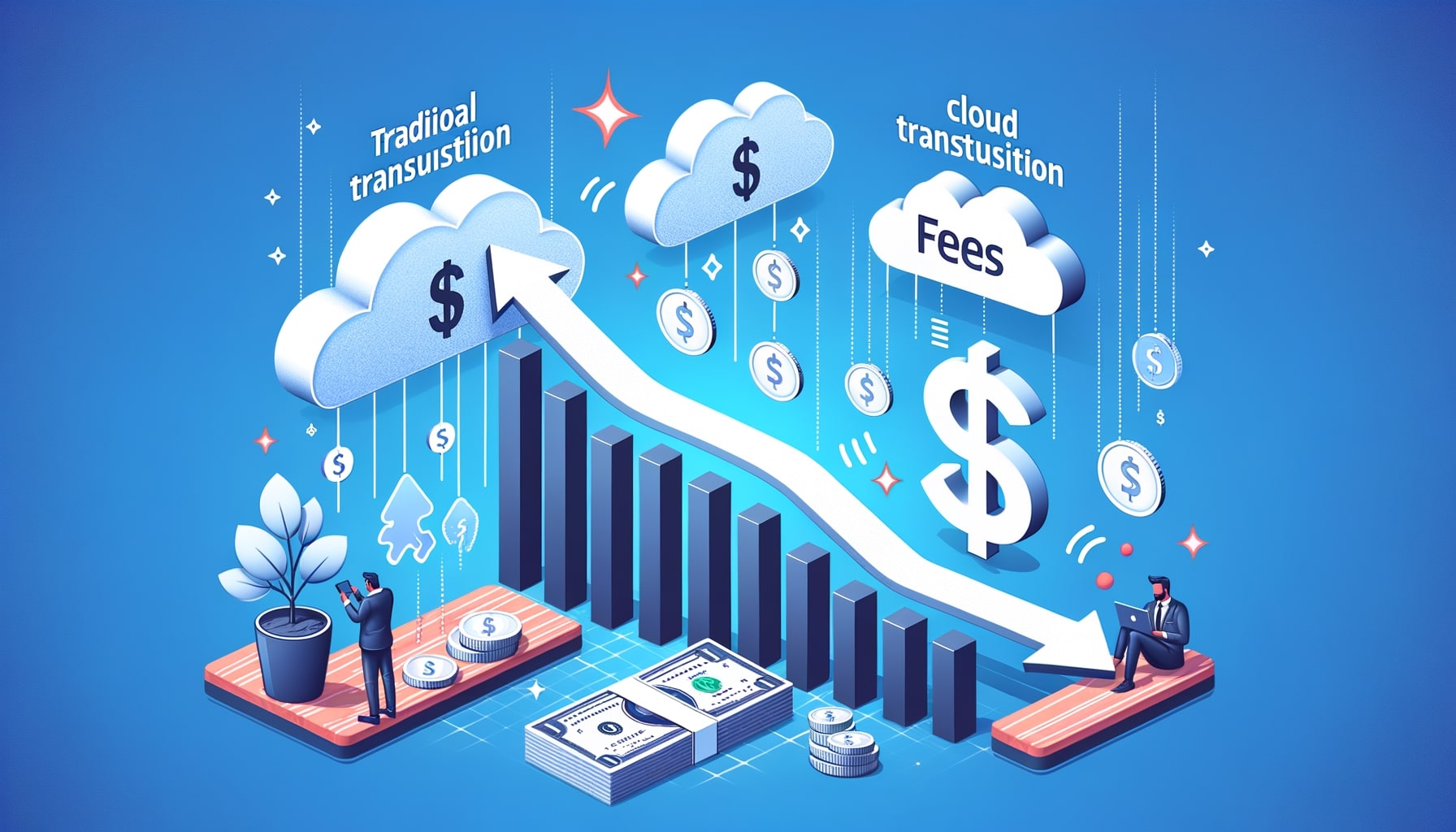How Cloud Payments Are Reducing Transaction Costs
In today’s digital age, businesses are constantly seeking ways to streamline their operations and reduce costs. One area where significant savings can be achieved is in transaction costs. Traditional payment methods, such as cash or checks, often involve manual processes that are time-consuming and prone to errors. However, with the advent of cloud payments, businesses can now leverage the power of the cloud to simplify and automate their transaction processes, leading to substantial cost reductions.
Cloud payments refer to the use of cloud computing technology to facilitate and process financial transactions. Instead of relying on physical infrastructure, such as on-premises servers or point-of-sale terminals, cloud payment systems utilize remote servers and internet connectivity to securely handle payment transactions. This innovative approach offers numerous benefits, including increased efficiency, enhanced security, and reduced transaction costs.
How Cloud Payments Streamline Transaction Processes
One of the primary advantages of cloud payments is the streamlined transaction process it offers. Traditional payment methods often involve multiple steps, such as manually entering payment information, verifying the transaction, and reconciling accounts. These manual processes are not only time-consuming but also prone to errors, leading to additional costs for businesses.
With cloud payments, these processes are automated, eliminating the need for manual intervention. When a customer makes a payment, the transaction data is securely transmitted to the cloud payment system, where it is processed and verified in real-time. This automation significantly reduces the time and effort required to complete a transaction, resulting in faster payment processing and improved customer satisfaction.
Furthermore, cloud payment systems often integrate with other business applications, such as inventory management or customer relationship management (CRM) systems. This integration allows for seamless data flow between different systems, eliminating the need for manual data entry and reducing the risk of errors. For example, when a customer makes a purchase, the cloud payment system can automatically update the inventory levels in the business’s inventory management system, ensuring accurate stock tracking and reducing the likelihood of overselling.
The Advantages of Cloud Payments in Reducing Transaction Costs
Cloud payments offer several advantages that directly contribute to reducing transaction costs for businesses. Firstly, the automation of payment processes eliminates the need for manual intervention, reducing labor costs associated with payment processing. Instead of allocating resources to manually process payments, businesses can redirect their workforce to more value-added tasks, such as customer service or business development.
Additionally, cloud payment systems often offer competitive pricing models, allowing businesses to choose a payment plan that aligns with their transaction volume and budget. Unlike traditional payment methods that may involve fixed costs or transaction fees, cloud payment providers often offer flexible pricing options, such as pay-as-you-go or tiered pricing models. This flexibility enables businesses to optimize their payment processing costs based on their specific needs, resulting in significant savings.
Furthermore, cloud payment systems can help businesses reduce the risk of fraud and chargebacks, which can be costly to resolve. Cloud payment providers employ advanced fraud detection and prevention measures, such as machine learning algorithms and real-time transaction monitoring, to identify and mitigate fraudulent activities. By leveraging these security measures, businesses can minimize the financial impact of fraudulent transactions and chargebacks, ultimately reducing their transaction costs.
Exploring the Security Measures of Cloud Payment Systems
Security is a critical concern when it comes to financial transactions, and cloud payment systems prioritize the protection of sensitive payment data. These systems employ robust security measures to ensure the confidentiality, integrity, and availability of payment information.
One of the key security features of cloud payment systems is data encryption. Payment data is encrypted during transmission and storage, making it unreadable to unauthorized individuals. Encryption algorithms, such as Advanced Encryption Standard (AES), are used to secure the data, providing an additional layer of protection against data breaches.
Moreover, cloud payment systems often comply with industry standards and regulations, such as the Payment Card Industry Data Security Standard (PCI DSS). PCI DSS sets forth a comprehensive framework for securing payment card data, including requirements for network security, access controls, and regular security audits. By adhering to these standards, cloud payment providers ensure that businesses can process payments securely and maintain compliance with industry regulations.
Integrating Cloud Payments into Existing Business Infrastructure
Integrating cloud payments into existing business infrastructure is a crucial step in leveraging the benefits of this technology. Cloud payment systems are designed to seamlessly integrate with various business applications, such as e-commerce platforms, point-of-sale (POS) systems, and accounting software.
For businesses with an online presence, integrating cloud payments into their e-commerce platform is essential. Most cloud payment providers offer software development kits (SDKs) or application programming interfaces (APIs) that enable businesses to integrate payment functionality into their websites or mobile applications. This integration allows customers to make payments directly on the business’s website, providing a seamless and convenient user experience.
Similarly, businesses with physical retail locations can integrate cloud payment systems into their POS systems. Cloud-based POS systems, also known as mPOS, enable businesses to accept payments using mobile devices, such as tablets or smartphones. These systems connect to the cloud payment system, allowing for real-time payment processing and synchronization of transaction data across different sales channels.
Furthermore, integrating cloud payments with accounting software can streamline the reconciliation process and improve financial visibility. Cloud payment systems can automatically sync transaction data with the business’s accounting software, eliminating the need for manual data entry and reducing the risk of errors. This integration enables businesses to have real-time visibility into their financial transactions, simplifying the reconciliation process and improving overall financial management.
Overcoming Challenges in Implementing Cloud Payment Systems
While cloud payments offer numerous benefits, businesses may encounter challenges during the implementation process. It is essential to address these challenges proactively to ensure a smooth transition to cloud payment systems.
One common challenge is the integration of cloud payment systems with existing infrastructure. Businesses may have legacy systems or custom-built applications that require additional development or customization to integrate with the cloud payment system. It is crucial to work closely with the cloud payment provider and IT professionals to ensure a seamless integration process.
Another challenge is the change management aspect of implementing cloud payment systems. Employees may resist the adoption of new technologies or require training to familiarize themselves with the new payment processes. Effective communication and training programs can help alleviate these concerns and ensure a successful transition.
Furthermore, businesses must consider the scalability and reliability of cloud payment systems. As transaction volumes increase, the cloud payment system should be able to handle the increased load without compromising performance or security. It is essential to choose a cloud payment provider that offers scalable infrastructure and has a proven track record of reliability.
Frequently Asked Questions about Cloud Payments and Transaction Costs
Q.1: What is the difference between cloud payments and traditional payment methods?
Answer: Cloud payments leverage cloud computing technology to process financial transactions, while traditional payment methods often involve manual processes and physical infrastructure. Cloud payments offer automation, integration with other business applications, and enhanced security compared to traditional methods.
Q.2: How do cloud payments reduce transaction costs?
Answer: Cloud payments reduce transaction costs by automating payment processes, eliminating the need for manual intervention. This automation saves labor costs and reduces the risk of errors. Additionally, cloud payment systems often offer flexible pricing models, allowing businesses to optimize their payment processing costs based on their specific needs.
Q.3: Are cloud payment systems secure?
Answer: Yes, cloud payment systems employ robust security measures, such as data encryption and compliance with industry standards like PCI DSS, to ensure the security of payment data. Cloud payment providers invest heavily in security to protect sensitive information from unauthorized access.
Q.4: Can cloud payments be integrated with existing business infrastructure?
Answer: Yes, cloud payments can be seamlessly integrated with existing business infrastructure, such as e-commerce platforms, POS systems, and accounting software. Cloud payment providers offer SDKs or APIs that enable businesses to integrate payment functionality into their existing systems.
Q.5: What challenges can businesses face when implementing cloud payment systems?
Answer: Businesses may encounter challenges in integrating cloud payment systems with existing infrastructure, managing change within the organization, and ensuring scalability and reliability. It is crucial to address these challenges proactively and work closely with the cloud payment provider and IT professionals.
Conclusion
Cloud payments have revolutionized the way businesses process financial transactions, offering streamlined processes, cost reductions, and enhanced security. By leveraging the power of the cloud, businesses can automate payment processes, integrate with other business applications, and reduce transaction costs. Real-life case studies demonstrate the significant savings that can be achieved through the adoption of cloud payment systems.
While challenges may arise during the implementation process, businesses can overcome them by proactively addressing integration, change management, and scalability concerns. By embracing cloud payments, businesses can optimize their transaction processes, reduce costs, and improve overall financial management. As technology continues to evolve, cloud payments will undoubtedly play a crucial role in shaping the future of transaction processing.










